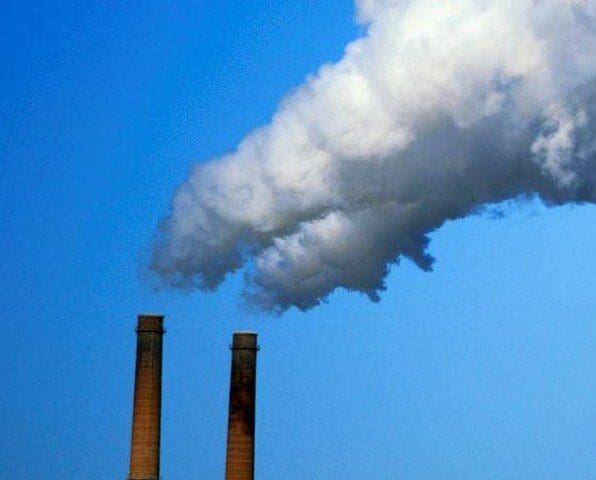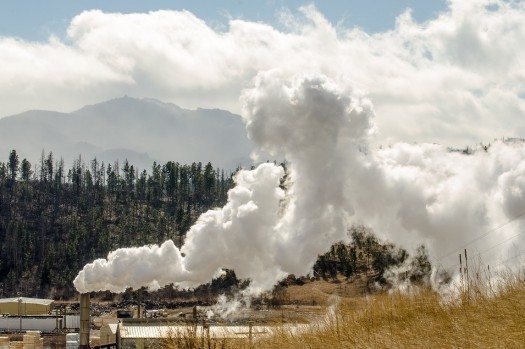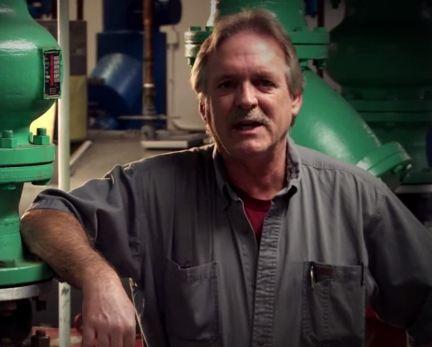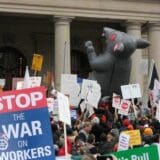

Labor 411’s Test Kitchen is just in time for the holidays! We’re sharing a recipe for Homemade Eggnog, which is THE traditional holiday beverage. We’ve got a recipe to make it using all union-made ingredients – and you’ll find the union brands listed next to each item. This quintessential holiday beverage is perfect to share with your friends and family.
Be forewarned: This recipe contains a little bit of alcohol. Do not consume alcohol if you are underage.
Eggnog Ingredients
6 eggs (separated) – Alta Dena, Horizon
3/4 cup sugar – Domino Sugar, Sugar in the Raw
1 pint heavy cream – Alta Dena, Horizon
1-1/2 (1.5) quarts milk – Alta Dena, Horizon
(or 1 quart milk + 2 cups whiskey) – we suggest Knob Creek
½ cup rum – Bacardi
Directions
Beat egg whites until fluffy,


 A few years ago, I was pulled over by the police. I’d reported my car stolen some months earlier and they’d never taken that report out of the system after I’d gotten it back. It was a minor error on their part, but it resulted in a fairly scary moment.
A few years ago, I was pulled over by the police. I’d reported my car stolen some months earlier and they’d never taken that report out of the system after I’d gotten it back. It was a minor error on their part, but it resulted in a fairly scary moment.
I pulled into a parking lot and noticed a police car behind me, lights on. The officer told me to put my hands out of the car, and open the car from the outside, like on television. When I got out, his gun was pointed at me, and I was handcuffed and placed in the backseat of his car. A few minutes later, he brought me my three-year-old son.
My son, understandably, was terrified, and though the officers cleared up the mistake in a few minutes and bought him a toy (a miniature police car) at the toy store we were going to,
» Read more about: L.A. Schools: Under the Gunman's Shadow »


Today The New York Times dropped the other shoe of its investigation into charges of Walmart bribery in Mexico. In some important ways, that second shoe is going to sound even louder than the first. This past April The Times reported how, in 2004, a former Walmart employee became a whistleblower and informed the retail giant’s top brass that systemic bribery had been Walmart de Mexico’s default mode when it came to obtaining building permits and other forms of government cooperation. The executives in Bentonville, Arkansas ordered an internal investigation – but cut it short after the whistleblower’s charges were proved true.
Now The Times’ own investigation, which picked up where Walmart’s was unceremoniously canceled, reveals how the company showered bribes on Mexican officials to overcome zoning prohibitions against building a Walmart supermarket close to that country’s cherished pyramids at Teotihuacán.
» Read more about: N.Y. Times Story Reveals More Walmart Bribery »


 The looming fiscal cliff has prompted renewed debate over the idea of a carbon tax – a way of putting a price on the carbon pollution that leads to climate change. Some say a carbon tax would raise funds that would create jobs and boost the American economy while helping to tackling climate change. Others warn it would give government too much control over the energy sector.
The looming fiscal cliff has prompted renewed debate over the idea of a carbon tax – a way of putting a price on the carbon pollution that leads to climate change. Some say a carbon tax would raise funds that would create jobs and boost the American economy while helping to tackling climate change. Others warn it would give government too much control over the energy sector.
Here in California, we didn’t wait for the folks in Washington to make up their minds – we’re already implementing a carbon price. Our landmark clean energy and climate law, AB 32, led to a successful first auction of greenhouse gas pollution credits that raised $290 million for the state in November. These funds will go to a variety of investments in energy efficiency, greener infrastructure, clean energy jobs, and other priorities that focus on making life better for all Californians.


 It was the centerpiece of the president’s re-election campaign. Every time Republicans complained about trillion-dollar deficits, he and other Democrats would talk jobs.
It was the centerpiece of the president’s re-election campaign. Every time Republicans complained about trillion-dollar deficits, he and other Democrats would talk jobs.
That’s what Americans care about—jobs with good wages.
And that’s part of why Obama and the Democrats were victorious on Election Day.
It seems forever ago, but it’s worth recalling that President Obama won re-election by more than four million votes, a million more than George W. Bush when he was re-elected—and an Electoral College majority of 332 to Romney’s 206, again larger than Bush’s electoral majority over Kerry in 2004 (286 to 251). The Democratic caucus in the Senate now has 55 members (up from 53), and Republicans have eight fewer seats in the House than before.
So why, exactly, is Washington back to obsessing about budget deficits? Why is almost all the news coming out of our nation’s capital about whether the Democrats or Republicans have the best plan to reduce the budget deficit?
» Read more about: Congress: Create Jobs Instead of Cutting Debt »


» Read more about: "We Didn't Vote to Cut Medicare and Social Security!" »


Mother Jones has unearthed another video in what might be called the One Percent Behaving Badly genre. While not as awesome as the magazine’s previous discovery of footage of Mitt Romney bad-mouthing the half of America who are shiftless parasites, this one will nevertheless fill you with holiday cheer. It shows AIG honcho and white rapper Robert Gifford at a company party in New York, flowing freestyle about his street cred — Wall Street cred, that is. AIG, of course, was the recipient of more than $182 billion of government bailout money in 2008.
Sample lyric, sung to Jay-Z’s “Empire State of Mind:”
Concrete jungle where attitude reigns supreme
There’s nothin’ you can’t do
Now you’re in GRE (GRE!)
Big write offs will inspire you
Preparing business cases will make you feel brand new
» Read more about: Yo Yo Yo! AIG's Definitely in the House! »


 A former colleague and friend once described a job interview he had with a well-known political figure. My friend, who got the job, said that during his interview he was asked, “What do you like to do outside of work?” There was just one acceptable answer in that instance: “Nothing.”
A former colleague and friend once described a job interview he had with a well-known political figure. My friend, who got the job, said that during his interview he was asked, “What do you like to do outside of work?” There was just one acceptable answer in that instance: “Nothing.”
An abandonment of any non-professional interests is also a requirement for an unpaid internship listing in London’s Dalkey Archive Press.
The listing discourages free thinking applicants and those who have ever made a mistake:
Any of the following will be grounds for immediate dismissal during the probationary period: coming in late or leaving early without prior permission; being unavailable at night or on the weekends; failing to meet any goals; giving unsolicited advice about how to run things; taking personal phone calls during work hours; gossiping; misusing company property, including surfing the internet while at work;


It seems appropriate that after Michigan Governor Rick Snyder (R) shepherded through the state House and Senate the right-wing extremist and corporate CEO backed “right to work” for less legislation—that he had long-called “too divisive to pursue”—without any public input, that he would sign the measure in secret Tuesday.
With as many as 15,000 people swarming the state Capitol in Lansing denouncing Snyder and the legislature for bowing to the likes of the Koch brothers, Grover Norquist, the American Legislative Exchange Council (ALEC) and the extremes of the Republican Party, Snyder retreated behind closed doors to sign the legislation and, only after the fact, announced his signature. Here are some details of the legislation that, if it follows the pattern of “right to work” laws in other states, will lower the standard of living for Michigan workers.
» Read more about: Facts About Michigan's New Anti-Union Law »


 On the day North Korea launched a missile this week, the virulently anti-labor website Union Facts splashed a banner on its home page that likened union membership to living in North Korea. This was December 11, when a lame-duck legislature turned Michigan into a right-to-work state — banning unions from collecting fees or dues from workers as a prerequisite for working in unionized shops. (In a shrewdly divisive ploy, Republican bill-sponsors exempted police and firefighter unions from the law.)
On the day North Korea launched a missile this week, the virulently anti-labor website Union Facts splashed a banner on its home page that likened union membership to living in North Korea. This was December 11, when a lame-duck legislature turned Michigan into a right-to-work state — banning unions from collecting fees or dues from workers as a prerequisite for working in unionized shops. (In a shrewdly divisive ploy, Republican bill-sponsors exempted police and firefighter unions from the law.)
In this week’s tightly scripted political theater, Lansing’s two legislative houses raced through their synchronized movements as though the capitol were afire. Later, hitting his marks on cue, Governor Rick Snyder emerged from the wings to sign this coup d’etat into law. (To think, only a few months ago the New York Times was giving Snyder the Profiles in Courage treatment, portraying him as that mythical unicorn of a politician,
» Read more about: Puppet Government: What the Michigan Vote Means »